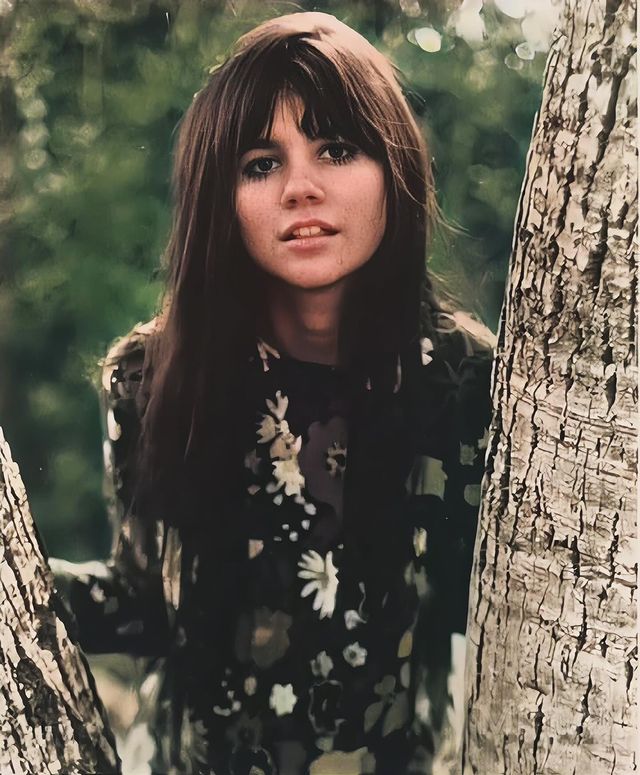Linda Ronstadt: The Queen of Musical Versatility
Ronstadt’s musical journey began in the 1960s when she moved to Los Angeles to pursue her dreams. It was here she joined the folk-rock group, The Stone Poneys, which led to her first taste of success with their hit song, “Different Drum.” This single not only propelled her into the public eye but also laid the foundation for her solo career.

Rise to Fame in the 1970s
The 1970s marked the rise of Linda Ronstadt as one of the most powerful voices in rock music. Her breakthrough solo album, *Heart Like a Wheel* (1974), showcased her powerful voice with hits like “You’re No Good” and “When Will I Be Loved.” These songs helped her to gain widespread recognition and critical acclaim, positioning her as a force to be reckoned with in the music industry.

As one of the first women to achieve mainstream rock success, Ronstadt broke barriers in an industry dominated by male artists. Her collaborations with icons like The Eagles, Jackson Browne, and James Taylor cemented her status as a top-tier rock vocalist. She won her first Grammy Award for *Heart Like a Wheel* and continued to release successful albums throughout the decade, building a loyal fan base and earning widespread praise.
Exploring Country and Bluegrass
While Ronstadt’s career was initially defined by rock music, she never confined herself to one genre. In the mid-1970s, she began exploring country music with albums like *Prisoner in Disguise* (1975) and *Hasten Down the Wind* (1976). These albums featured covers of country classics, which helped bridge the gap between rock and country music. Ronstadt’s ability to cross musical boundaries effortlessly endeared her to fans of both genres.

In the late 1970s, Ronstadt formed an iconic trio with Dolly Parton and Emmylou Harris. Their album, *Trio*, released in the 1980s, was a commercial success, winning multiple Grammy Awards. This collaboration showcased Ronstadt’s appreciation for bluegrass and country harmonies and solidified her place in the country music world.
Diversifying Her Musical Palette with New Genres
Ronstadt continued to evolve musically into the 1980s, expanding her horizons by embracing traditional pop and American standards. Her collaboration with legendary arranger Nelson Riddle resulted in the albums *What’s New* (1983) and *Lush Life* (1984). These records featured classic jazz and big band tunes, allowing Ronstadt to showcase her vocal versatility.

The success of these albums proved that Ronstadt was much more than just a rock star. Songs like “Someone to Watch Over Me” demonstrated her ability to master complex jazz and pop genres, gaining her a new audience while maintaining her loyal fanbase. The albums were both critically acclaimed and commercially successful, marking a new chapter in Ronstadt’s career.
Honoring Her Mexican Heritage
One of the most significant chapters of Ronstadt’s career came when she embraced her Mexican heritage by recording an album entirely dedicated to Mexican rancheras. In 1987, she released *Canciones de Mi Padre*, a tribute to traditional Mexican music. This album was deeply personal, as it paid homage to her father’s Mexican roots.

*Canciones de Mi Padre* became one of the best-selling non-English-language albums in American music history. The album’s success helped introduce Mexican folk music to a broader American audience and earned Ronstadt a Grammy Award. The album also showcased her remarkable ability to sing in Spanish, further expanding her artistic reach. Ronstadt went on to release two more Spanish-language albums, *Mas Canciones* and *Frenesí*, both of which were well-received by critics and fans alike.
Later Career and Personal Challenges
In the 1990s, Ronstadt continued to explore various musical genres, including children’s music. Her album *Cry Like a Rainstorm, Howl Like the Wind* (1989), which featured a blend of rock and pop, earned her another Grammy Award. Despite her continued creative output, Ronstadt began to slow down her career in the 2000s as she faced personal challenges, including health issues that ultimately led to her retirement from performing.

In 2013, Ronstadt revealed that she had been diagnosed with Parkinson’s disease, a condition that severely impacted her ability to sing. While this marked the end of her career as a performing artist, her influence continues to resonate with musicians and fans alike. Her career achievements have earned her numerous accolades, including induction into the Rock and Roll Hall of Fame in 2014 and the Kennedy Center Honor in 2019.
Legacy and Influence
Linda Ronstadt’s legacy is one of immense musical influence and groundbreaking achievements. She broke barriers for women in rock music and was a key figure in bringing country and bluegrass to mainstream audiences. Her embrace of her Mexican roots helped bring Latin music to a wider American audience, and her work has had a lasting impact on the music industry.

Ronstadt’s fearless approach to musical exploration set a powerful example for other artists, showing that it is possible to blend genres and take creative risks. Her influence is seen in artists like Sheryl Crow, Bonnie Raitt, and Trisha Yearwood, who cite her as a major inspiration in their own musical careers. Ronstadt’s legacy is a testament to the power of authenticity, versatility, and resilience in the music industry.
Conclusion
Linda Ronstadt’s career is a remarkable journey of exploration, resilience, and artistry. Her ability to seamlessly transition between rock, country, jazz, and Latin music is a testament to her incredible vocal talent and versatility. Ronstadt’s influence continues to be felt across the music world, inspiring generations of artists to follow their passion and embrace the power of authenticity.
Today, Ronstadt is celebrated as one of the most beloved and respected figures in American music. Her legacy will continue to inspire not only her fans but also the countless artists she influenced throughout her incredible career. Linda Ronstadt’s musical journey serves as a reminder of the power of diversity in music, and her impact will endure for generations to come.
Share this content:









Post Comment